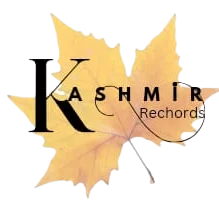1899 British Army Captain’s Rare Book on Dogras
(By: Dr. Rajesh Bhat)

Dogra soldiers stand out among other infantrymen because of their kind, benevolent and rather introvert nature, which has rightfully given them the title of ‘Gentleman Soldiers’ within the Indian Army fold. The battalions of the Dogra regiment have always been instrumental in exemplary gallant acts. A reserved man with considerable strength of character, Dogras have a high idea of honour, of self-respect and the duty of a capital soldier. They have long been known as brave and faithful soldiers and loyalty to their salt is with them as the breath of their nostrils. This has been penned down by Captain A.H Bingley, 7th (Duke of Connaught’s Own) Bengal Infantry in his well-compiled Book `Dogras’, printed at Central Printing office Simla (Shimla) in 1899, under the orders of Government of India.
In addition to the military character of Dogras, the author of this Class Handbook for the Indian Army, also speaks about history, region, customs, culture and festivals of Dogras spread in Jammu and Kashmir, Punjab and parts of Himachal Pradesh. The Book has been revised by A. B Longden in 1921 and further revised by Dr. Sukhdev Singh Charak who has added Dogra Art and Literature to its chapters. Kashmir Rechords is in its possession a rare edition of this book on Dogra History and Culture and shall share its contents in a series of write-ups.

This book had to be published in 1899 as the military needs motivated few Britishers to compile information on the Dogras. The job was thus assigned to Captain A. H Bingley. His fellow soldier, W. B Cunningham also contributed in its compilation.
Dogra Soldiers in China, Burma
Captain Bingley states that unlike conservative Hindus of that time, Dogras have no objection to sea voyages or to Foreign Service. He makes a mention of a number of them having served in China in 1860. While some were in garrison at Suakim in 1896, a certain number of Dogras were enlisted in some of the Burma Battalions and in the Military Police.

The fact that they being mostly hillmen, Captain Bingley says Dogras are specially valuable in the mountain warfare in which the Indian Army is so often engaged. “The records of the Punjab Frontier Force give ample testimony to the value of the Dogra soldier in numerous expeditions on the border. The troops of the Kashmir Durbar, which are largely composed of Dogras, distinguished themselves greatly in the Hunza-Nagar campaign of 1891, more especially at the capture of Nilt; and the high reputation they then established has been added to by their bravery and endurance in the defence of Chitral and in the memorable march to its relief’’.
Dogra Recruiting Ground


